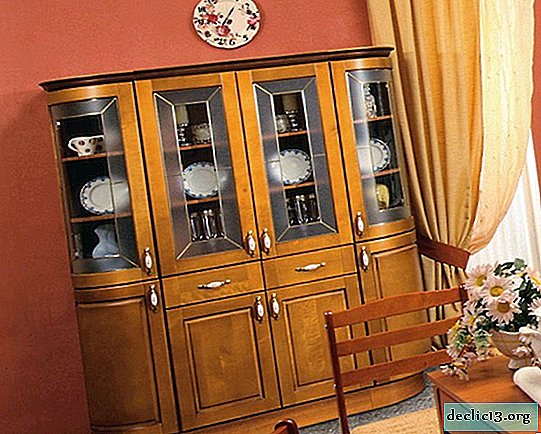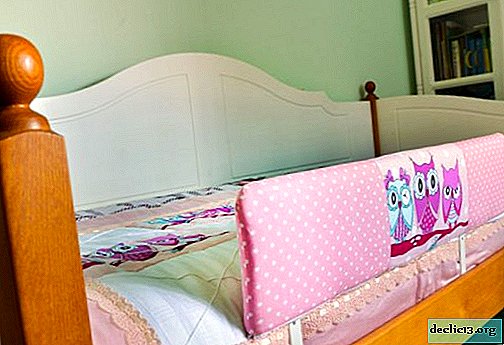Pergamon is the most popular museum in Berlin
The Pergamon Museum or, as it is also called, Pergamon is an unusual and quite interesting place. It impresses not only with its scale, but also with a unique collection of exhibits, most of which date back to the pre-Christian era.

General information
The Pergamon Museum, located on Museum Island, can be without exaggeration called one of the most visited places in the German capital. In 2013, more than 1 million people visited it, and every year the number of tourists coming here is growing exponentially. On the territory of the complex you can meet both ordinary people and famous politicians, eminent actors and world pop stars. All of them are attracted by unique exhibits, whose history goes back hundreds of thousands of years. Together with works of ancient Asian and Islamic art, they make up an incredibly valuable collection, which in 1999 was included in the UNESCO World List.

What is interesting, until recently, the museum’s collections were only interested in curious tourists and connoisseurs of ancient history. However, as soon as all the expositions were collected and restored, Turkey suddenly declared their rights to them. The Turkish authorities motivate their position by the fact that the city of Pergamon, in whose honor this panopticon was named, was on the site of the modern Turkish Republic, which means that everything that was found there should belong to this state.
Short story
The Pergamon Museum in Berlin owes its birth to the German engineer Karl Human, who supervised the laying of a new road in one of the countries of Asia Minor. In that distant 1878, during construction work, he was lucky enough to stumble upon the ruins of an ancient frieze decorated with bas-relief sculptures of ancient heroes and Olympic gods. This was the legendary Pergamon Altar of Zeus, which today is considered the main asset of the museum's collection.

However, when the amazing find was transported to Berlin, it turned out that there was practically nowhere to put it. It was then that the decision was made to build Pergamon, a separate building that contained not only this artifact, but also numerous exhibits of ancient Asian and ancient sculpture. So the first Pergamon Museum appeared, which lasted no more than 5 years and was demolished after the appearance of huge cracks in the foundation.
The construction of the second building began almost immediately, but work on it was postponed every now and then. At first, they were prevented by the death of the chief architect, who had been looking for a replacement for a long time, and then - World War I and the subsequent financial crisis that markedly undermined the economic situation in the country. As a result, the new museum complex was opened only in 1930 - 23 years after the laying of the first stone.
However, the turmoil in the fate of Pergamon did not end there. During World War II, he was badly damaged by air shelling, and at the end of it he lost the main part of his exhibits - they were taken to the territory of the then USSR. After several decades, part of the collection returned to Berlin, but some of its samples can still be seen in the museums of St. Petersburg and Moscow.
Exposition
The Pergamon collection consists of 3 parts. One of them is dedicated to the Greco-Roman era, the other two to ancient Islamic and Near Asian cultures. By and large, these are separate expositions connected in a single complex.
 Gate of the goddess Ishtar
Gate of the goddess IshtarThe first thing a visitor to the Pergamon Museum sees is the majestic gate of the goddess Ishtar dating from the 6th century. BC e. and found during excavations of Ancient Babylon. Historians claim that they were part of the Procession Road, used during the celebration of the country's main holiday, the New Year. On the blue mosaic decorating this gate, one can easily see bas-reliefs of various animals, images of mythological creatures resembling prehistoric dinosaurs, and even a cuneiform inscription by Nebuchadnezzar himself.
Even with a very impressive size, this design can not be called the largest exhibit of the museum. The fact is that in the building of Pergamon it was possible to place only the outer part of Ishtar - the internal gates, which are even higher, simply did not enter it. Present here is the Procession Road itself, leading from Ishtar to the shrine of Esagil. The remains of the ceramic panel, located on the walls on both sides of the sacred road, allowed to restore with absolute accuracy one of the main wonders of Ancient Babylon.

Both the gates and the panels were delivered in parts and assembled on site. And since the transportation of exhibits required considerable financial costs, the creators of the museum took only patterned tiles, completing the missing elements on their own.
 Miletus Market
Miletus MarketAnother attraction of the Pergamon Museum is the Miletus Market, the remains of which were found in Asia Minor. Despite the fact that the market was created in 1 tbsp. n e., the design is perfectly preserved and has survived to its present day in its original form. In Berlin, only certain elements of the market were created, and even they serve as supports for the original parts. Proof of this is the advertising sign of a local merchant, located on the right side of the entrance to the bazaar. Several urban buildings complete the composition, among which the most significant is the temple of the cult of the ruler of Ancient Rome, and the floor of one of the villas, laid out with ancient mosaic tiles.
Among other things, Pergamon has a large collection of gold jewelry, household items, antique statues and works of art created during the Assyrian, Sumerian and Babylonian empires.
Most of them are over 6 thousand years old. Among them, clay tablets created in the 7th century deserve the most attention. BC e., the remains of the main hall of Nebuchadnezzar II, a huge stone frieze, prayer mihrabs, samples of the first calligraphy and various reliefs depicting scenes from the life of an ancient person. No less popular exhibits of the Pergamon Museum are the Allep room, decorated with carved panels and sumptuous Persian rugs, and the walls of the Mshattu Palace, decorated with floral patterns and drawings of fantastic creatures.
 Panorama of Pergamum
Panorama of PergamumIf you look at the photo of the Pergamon Museum in Berlin, you can see that not so long ago his collection was replenished with another unique exhibit. We are talking about the panorama of Pergamum, a huge hall in which museum staff managed to recreate the atmosphere of the old Turkish city with a library, a bustling oriental market and figures of local residents. To enhance the effect, the visual picture is complemented by lighting and cacophony of sounds.
Well, the main and perhaps the most significant archaeological find of Pergamon can be safely called the Great Altar of Zeus, which served for worship in the open. The appearance of this sanctuary, considered one of the most famous structures of ancient times, is striking in its monumentality. A huge stone basement, installed on a five-step foundation, a wide marble staircase leading to the upper platform of the altar, an ionic portico surrounding the last tier - one cannot even believe that all this was erected without the help of cranes, excavators and other construction equipment.

Inside this composition is a small altar courtyard, which, in fact, housed the altar. The roof of the building was decorated with unusual sculptures, thanks to which the altar reached at least 9 m. The famous Great Frieze stretched along the entire perimeter of the altar, covering not only the basement itself, but also the side walls of the stairs. The bas-reliefs depicting the battle of the main Olympic gods and legendary titans are carved on this large rim. Another smaller frieze was in the courtyard and was dedicated to Telif.

Unfortunately, the structure installed in the hall of the Antique Assembly is not an exact copy of the ancient altar. The fact is that only the foundation and fragments of the pedestal are preserved from the legendary Pergamon Sanctuary. But archaeologists managed to find capitals and trunks of columns, statues, ceilings, cornices, relief images of both friezes, numbering more than a hundred plates, and other elements that formed the basis of the main museum exhibit. With their help, scientists were able to recreate the eastern wall of the altar, on which was the main part of the decor.
The reconstruction of this building lasted several years, because the debris found had to be not only restored, but also decomposed in the correct order. To do this, a team of historians, archaeologists and religious scholars had to determine on which wall a particular fragment was located, establish the sequence of images and fix it all on a special basis.Find out RATES or book any accommodation using this form
Practical information
The Pergamon Museum is located at Bodestrasse 1-3, 10178 Berlin, Germany.
Working hours:

- Mon-Wed, Fri-Sun: from 10:00 to 18:00;
- Thu: from 10:00 to 20:00;
- December 31: from 10:00. until 2 p.m .;
- January 1: from 12:00. until 18:00.
On Catholic Christmas Eve (December 24), the museum complex is closed.
Cost of visit:
| Type of admission ticket | Adult | At a discount (applies to students presenting a student ID internationally) |
|---|---|---|
| Pergamon only | 19€ | 9,50€ |
| Berlin Museum Island | 18,00€ | 9,00€ |
| Museum Pass Berlin for 1 day | 25,00€ | |
| Museum Pass Berlin for 3 days | 29,00€ | 14,50€ |
On a note! Russian audio guide is included in the ticket price.
Official website: //www.smb.museum/en/museums-institutions/pergamonmuseum/home.html
Useful Tips
When planning to visit the Pergamon Museum in Berlin, check out the tips of those who were lucky enough to be there:
- The main influx of visitors is observed towards noon, so if you want to avoid long lines and inspect the main exhibits in relative calm, come to the museum a few minutes before its opening;
- Museum Island does not have its own parking, but in the immediate vicinity you can find as many as 3 parking garages. Two of them belong to the Radison Blue Hotel and the International Trade Center, and the third is located on the eastern bank of the river. Sprays
- For those planning to visit 2 museums and more, we recommend purchasing the Museum Island Card, a reusable ticket with which you can save some money. True, with this card you can hardly get priority access to Pergamon, so do not forget to use a little trick - buy the less popular Museum Island Card at the box office and reserve the time for visiting Pergamon in it;
- Would you like to get to the museum complex without waiting in line? Get an electronic ticket on the official website.
 Museum Island
Museum IslandAs you can see, the Pergamon Museum in Berlin is completely different from its other brothers. We are sure that his visit will leave the most vivid memories.
Video: tour of the Pergamon Museum.
Related entries: Overview of the most interesting excursions in Berlin in Russian
Overview of the most interesting excursions in Berlin in RussianUpdated: July 17, 2019 With regard to Berlin, the most diverse epithets are relevant - ...
 Ring of Kerry - Mountains, Ocean and Lakes of Ireland
Ring of Kerry - Mountains, Ocean and Lakes of IrelandUpdated: 28 Jun, 2018 The Ring of Kerry is rightfully considered the Pearl of Ireland - ...
 How to get to the Reichstag in Berlin for a tourist: booking an excursion
How to get to the Reichstag in Berlin for a tourist: booking an excursionUpdated: July 2, 2019 Reichstag in Berlin ... They know about the existence of this building ...
 Topkapi Palace in Istanbul - one of the largest historical museums in the world
Topkapi Palace in Istanbul - one of the largest historical museums in the worldUpdated: 18 Jan, 2019 Topkapi Palace is a unique architectural monument of Istanbul, which ...

















